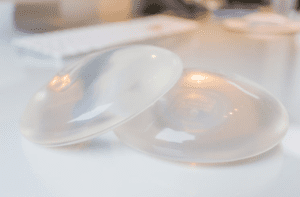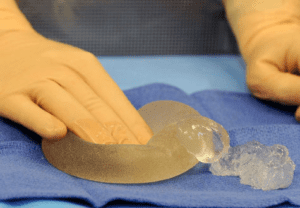Are you worried about the rupture of your silicone implant? It could be because you have started experiencing breast pain and a change in your breasts’ shape.
If you think your implants are leaking, you could be right.
Before you tire yourself out and make any self-diagnosis, don’t forget to read the given signs of silicone implant rupture first.
A silicone ruptured implant is not as common as one would believe. The prevalence of silicone rupture is as low as 5.3 out of 100 implants each year. Apart from aging, other reasons can be trauma, body changes, or damage by a surgical instrument.
What is an implant rupture?

An implant rupture occurs when a tear develops in the outer shell of the silicone breast implant. The failure may increase over time with noticeable signs and symptoms.
If you think you may have a rupture and do not have any visible symptoms, it could be a silent rupture.
What is a silent rupture?
Some older models of silicone implants have thicker shells and sticky gel filler material. If that is the case, the gel may stay within the capsule on rupture. That is why you may have no noticeable change in the size of implants or other symptoms causing the fracture to remain unnoticeable, thus called “silent rupture.”
To take the guesswork about what signs and symptoms to look for when experiencing a rupture, read on.
What are the FOUR common signs of silicone implant rupture?
Change in appearance
If your silicone implant ruptures, you might not notice any change in size or volume of breasts due to the low viscosity of the cohesive gel, but you may feel a difference in the contour or shape of the breast suddenly. Unlike saline, the breasts don’t shrink in the case of a silicone implant rupture.
Breast pain and swelling
The ruptured silicone implant may cause the gel to push against the breast’s underlying muscle and pull on the overlying skin, resulting in breast pain. It is rare with the rupture, though you may feel some tenderness, soreness, and a burning sensation in your breasts over weeks due to inflammation. Your swelling may also last for a few weeks. Please avoid taking any supplements that can increase the flow of blood and potentially cause more pain.
Hardening of breasts

Over time, an additional layer of scar tissue may form around the ruptured implant called “Siliconoma.” As a result, the capsule may harden, resulting in the thickening and visible deformity of breasts.
Presence of lumps and ripples
The older models of silicone implants, when ruptured, are likely to leak beyond the scar tissue of a capsule. The liquid gel may migrate to the body’s nearby tissues, such as lymph nodes, which rarely lead to lumps around the armpits, chest, or other areas of the body. The bumps and ripples are not initially visible from a silicone rupture. Gradually, you will notice apparent ripples and lumps around your breasts and armpits.
What is the screening method for the diagnosis of breast implant rupture?
Generally, the FDA suggests screening every three years after the silicone implant surgery and then at the two-year gap onwards. If you suspect a rupture based on implant rupture symptoms, consult with a board-certified plastic surgeon such as Dr. Barrett. He will physically examine your breasts and offer screening tests such as an MRI and ultrasound to determine whether the implant has ruptured.
I may have an implant rupture; what should I do?
First, schedule an appointment with Dr. Barrett, a board-certified plastic surgeon, and get your implants monitored. Some surgeons believe immediate surgery is required because the implant faulty and non-functional. Please keep in mind Dr. Barrett is most likely to replace both implants even if the rupture is on one side. Because everyone is different, he will consider other possible individualized treatment options.

